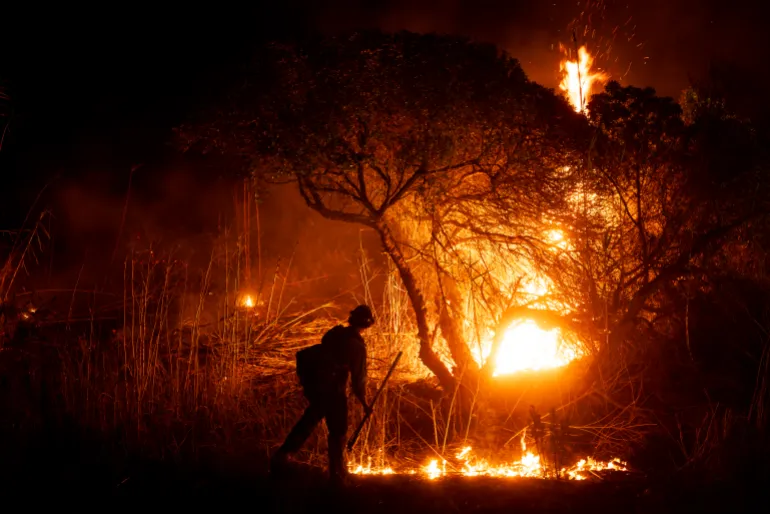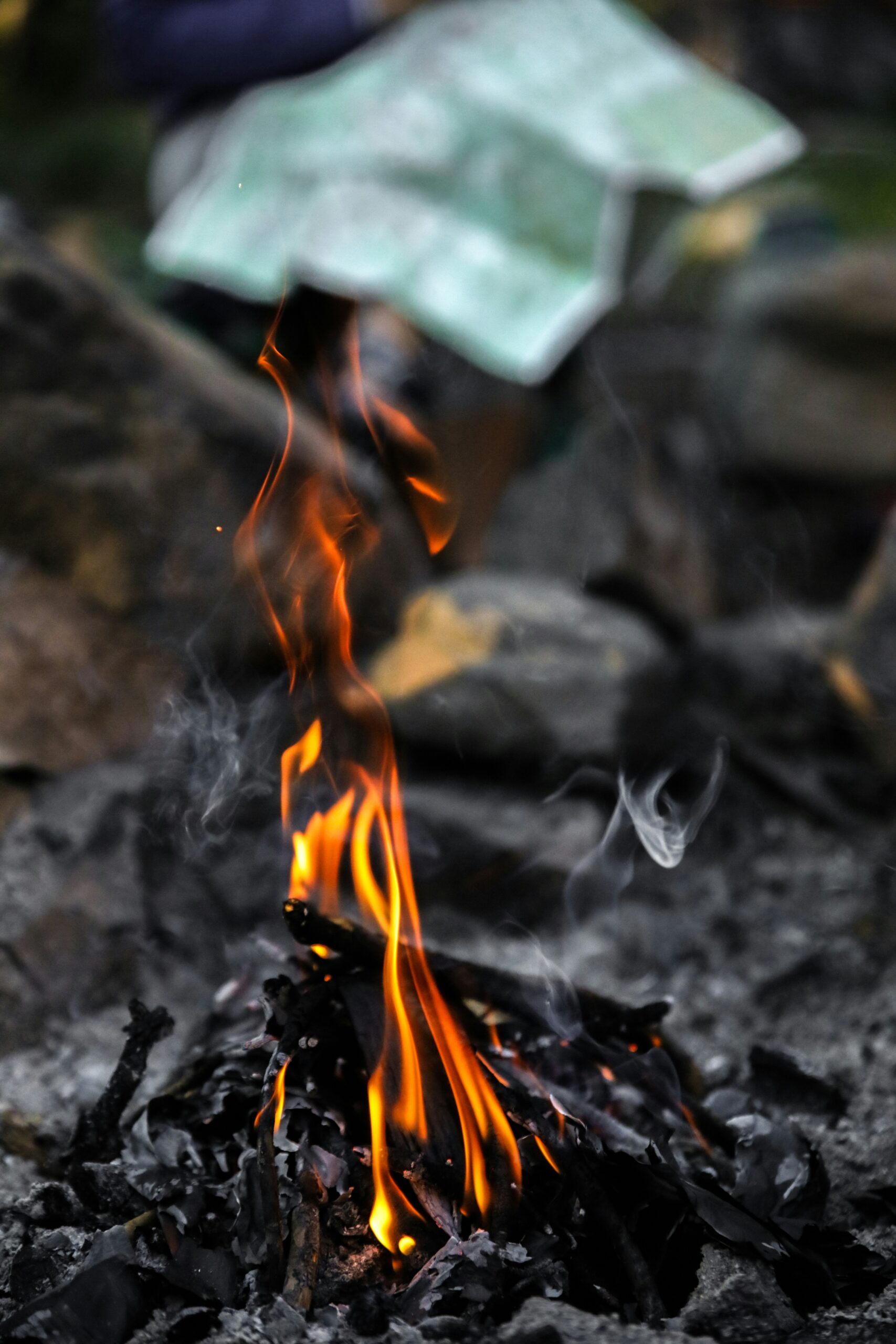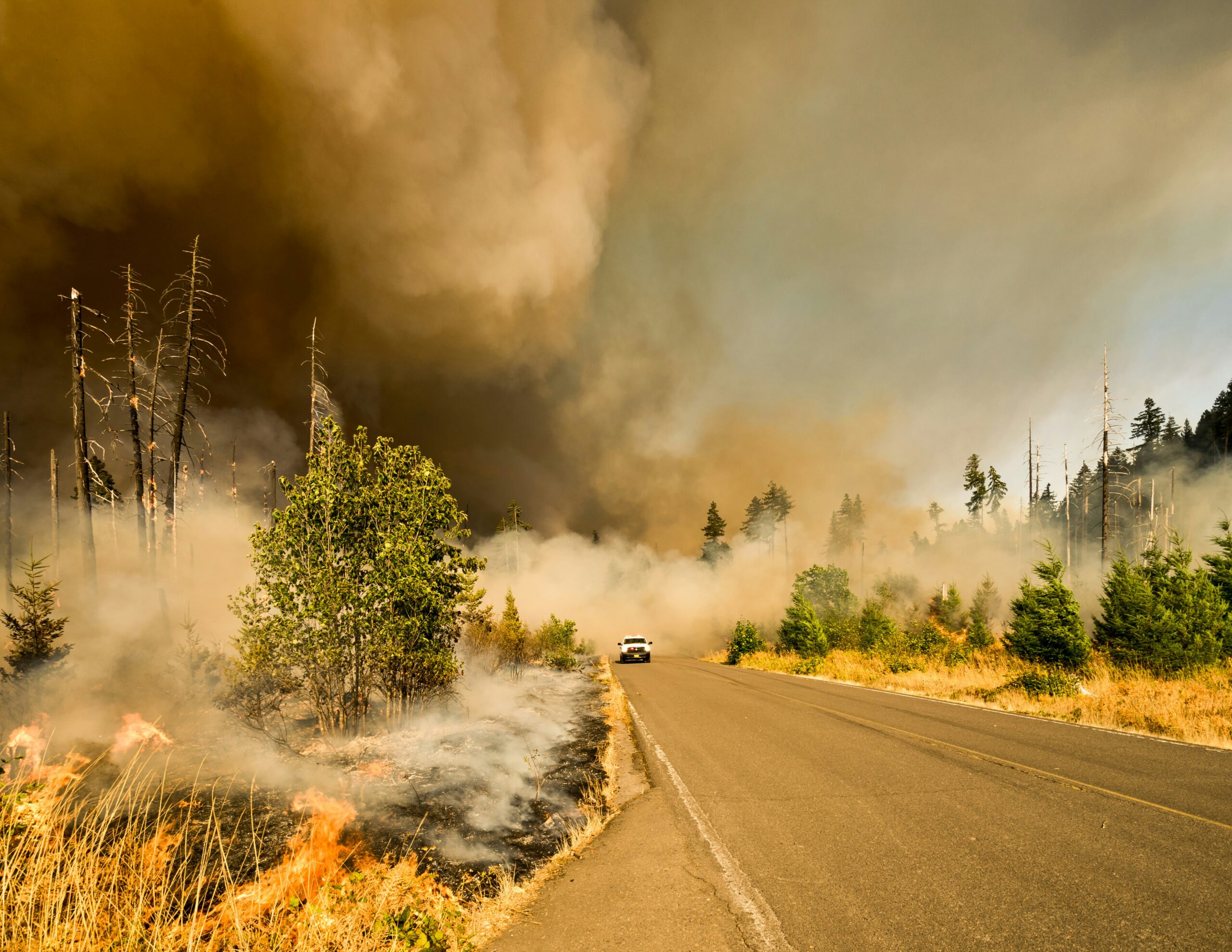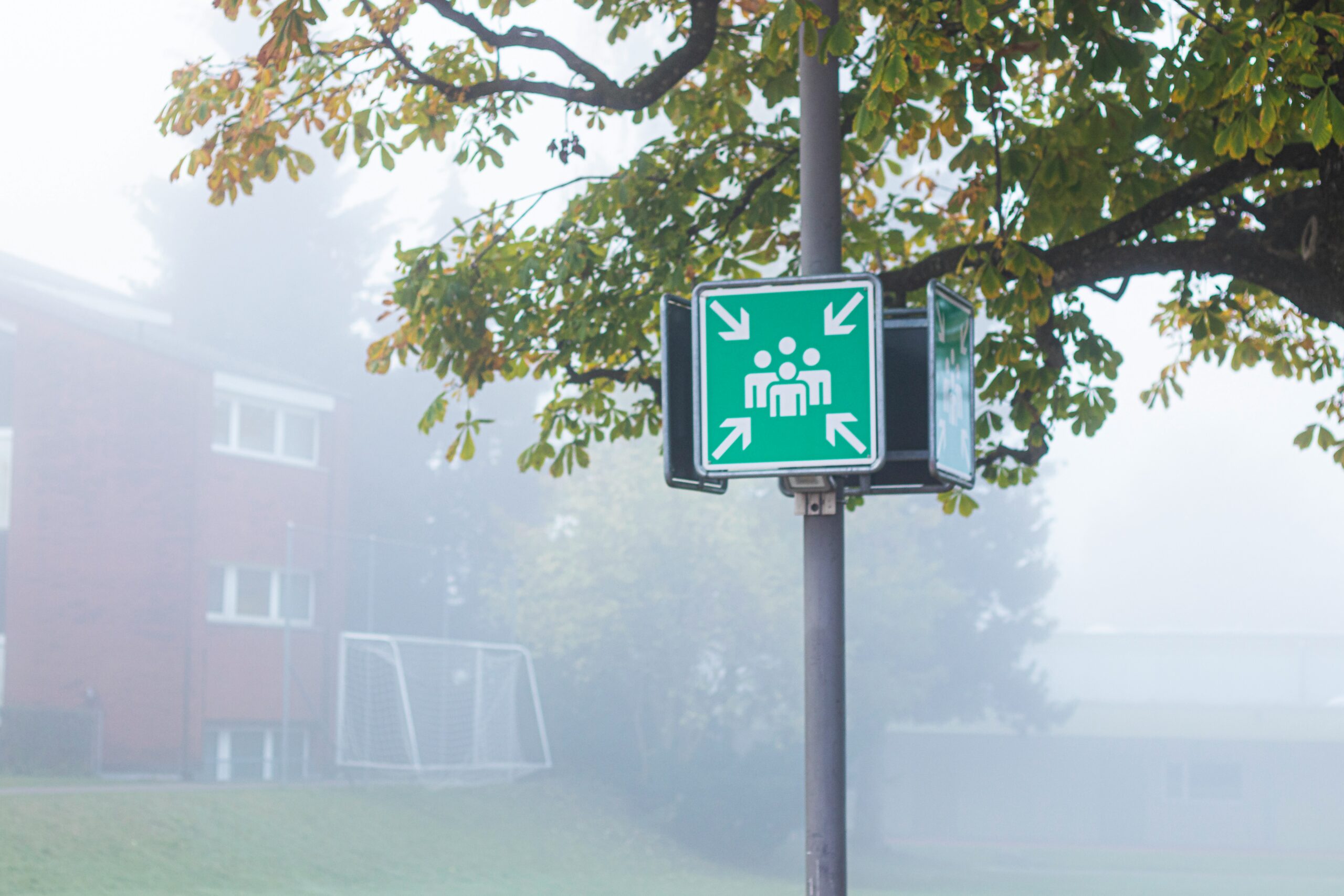Introduction to Ventura County Fires
Ventura County, located in southern California, is characterized by a unique geographical landscape that includes coastal areas, valleys, and mountainous regions. This diverse topography, combined with a Mediterranean climate, creates optimal conditions for wildfires. The area experiences warm, dry summers and mild, wet winters, contributing to prolonged periods of drought that further elevate fire risks. Additionally, the Santa Ana winds, known for their intensity and dry nature, can exacerbate fire behavior, making it difficult for firefighters to contain blazes once they ignite.
The history of fires in Ventura County is marked by several significant events that have shaped the community’s approach to fire management and prevention. One prominent incident is the 2017 Thomas Fire, which became the largest fire in California’s history at the time, scorching over 281,000 acres and destroying more than 1,000 structures. The aftermath of this devastating event revealed the far-reaching impacts of wildfires, including economic loss, destruction of homes, and adverse effects on air quality. The community’s response to this incident underscored the importance of preparedness and resilience in the face of natural disasters.
Beyond the immediate effects on infrastructure and environment, wildfires also pose serious risks to public health and safety. Smoke from wildfires can lead to respiratory issues and other health problems for residents both near and far from the fires themselves. The interplay between geography, climate, and historical events creates a complex landscape concerning fire risks in Ventura County. As we examine the current fire situation, understanding these factors is crucial for appreciating the challenges faced by both residents and firefighting agencies in the region.
Recent Fire Incidents in Oxnard and Surrounding Areas
In recent weeks, Oxnard and its neighboring communities in Ventura County have faced a series of fire incidents that have raised concerns among residents and officials alike. The most notable incident occurred on September 15, 2023, in the Oxnard area, where a brush fire broke out near the Ventura Freeway. The flames quickly spread across approximately 75 acres, necessitating a rapid response from local firefighting resources, including the Oxnard Fire Department and Cal Fire.
The cause of this fire is under investigation, but initial reports indicated that dry conditions and high winds contributed significantly to the rapid escalation of the fire. Firefighters faced challenges due to the terrain and limited visibility, necessitating the use of air support to combat the blaze effectively. Fortunately, through coordinated efforts, containment was achieved within 24 hours, and no significant injuries were reported. However, some nearby evacuations were enacted as a precautionary measure.
Another recent incident involved a small fire on October 5, 2023, near the coast of Port Hueneme, causing alarm among nearby residents. This fire was contained within a few hours, as local fire units responded swiftly to the scene. The cause was determined to be an accidental flare-up related to illegal burning, prompting fire officials to remind the public of the importance of adhering to fire bans and regulations during high-risk periods.
The response efforts in these incidents highlight the effectiveness of mutual aid among local agencies and the crucial role of community awareness in fire prevention. Updates from fire authorities stress the need for residents to remain informed about fire conditions and to utilize available resources for emergency preparedness. As the region continues to experience potential fire risks, vigilance and cooperation will remain vital in safeguarding the community.
Understanding the Role of Auto Fire Ventilation in Managing Fires
Auto fire ventilation is a crucial aspect of modern firefighting strategies, particularly in urban environments where buildings and infrastructure present unique challenges. This method involves the strategic release of heat, smoke, and gases from a structure, which is essential for creating safer conditions for both firefighters and civilians during a fire emergency. Proper ventilation can significantly impact the effectiveness of fire suppression efforts by not only improving visibility but also reducing the risk of flashovers and backdrafts, which are common hazards in fire situations.
In areas like Oxnard, where dense urban development can complicate fire response, the implementation of auto fire ventilation systems is particularly important. These systems often utilize mechanical means, such as fans, to ensure that hot gases are expelled from the structure quickly and effectively. The science behind auto fire ventilation centers on the principle that controlling the movement of heat and smoke can lead to better outcomes during suppression operations. By allowing fresh air to enter the building while expelling hot, toxic gases, firefighters can improve their ability to navigate trapped environments safely and efficiently.
An effective auto fire ventilation plan also incorporates considerations such as the structure’s design, the fire’s location, and the existing airflow patterns. Firefighters are trained to assess these factors quickly, determining the best approach for ventilation that will aid in managing the fire situation. Additionally, fire departments often conduct drills and simulations to prepare for real-life scenarios, ensuring that their teams are familiar with both manual and automated ventilation techniques.
In sum, auto fire ventilation plays a vital role in managing fires, offering a systematic approach to enhancing safety and efficacy in firefighting operations. The ability to control airflow during a fire can make a significant difference in urban areas like Oxnard, where the dynamics of fire spread and extinguishment can vary dramatically.
Fire Prevention Measures for Residents in Ventura County
Fire prevention is a critical concern for residents of Ventura County, where the risk of wildfires can be significant due to its unique topography and climate. One of the most effective strategies for mitigating fire risk is the maintenance of defensible space around homes. Defensible space refers to the area around a structure where vegetation has been modified or removed to reduce the potential for fire to spread. Residents are encouraged to create at least a 30-foot buffer of well-maintained landscaping, free of dead or overly dense vegetation. Using fire-resistant plants can further enhance this protective measure.
Proper disposal of flammable materials is another essential aspect of fire prevention. Homeowners should ensure that items like yard waste, firewood, and propane tanks are stored at a safe distance from structures. It is advisable to use designated burn areas or local disposal sites for yard debris rather than burning it in uncontrolled environments. Properly securing these items not only minimizes fire hazards but also contributes to overall community safety.
Community awareness plays a vital role in fire prevention. Residents should engage in local fire safety programs, which offer education and resources about fire risks and mitigation strategies. Participating in community clean-up events, such as brush clearance days, can help reduce the amount of combustible vegetation in community spaces. Furthermore, maintaining open lines of communication with local fire departments regarding any concerns can strengthen community ties and enhance collective preparedness.
Incorporating these fire prevention strategies not only protects individual homes but also contributes to the overall safety of the Ventura County community. By being proactive and informed, residents can play a significant role in reducing fire risks and ensuring a safer environment for everyone.
Fire Resources and Emergency Contacts for Ventura County
Understanding the resources available during fire emergencies is crucial for residents of Ventura County. Preparation and access to reliable information can significantly impact safety and response times during fire incidents. The following contacts and resources can assist individuals during these challenging situations.
First and foremost, in the event of an emergency, residents should immediately contact the Ventura County Fire Department by dialing 911. This agency is equipped to respond to fire incidents and will coordinate necessary firefighting efforts. For non-emergency inquiries or to obtain information regarding fire prevention and safety programs, residents may reach out to the Ventura County Fire Department’s non-emergency number at (805) 389-9710.
Additionally, the Ventura County Sheriff’s Office plays a vital role in providing public safety and managing evacuations during fire emergencies. Residents can contact the sheriff’s department by calling (805) 654-2380 for assistance or information regarding local emergency services.
Local organizations, such as the American Red Cross Ventura Chapter, offer essential services such as shelter, disaster relief, and recovery assistance to those affected by fire incidents. Their contact number is (805) 987-1514, where residents can learn more about available support resources.
Moreover, the Ventura County Office of Emergency Services provides timely updates and critical information during fire emergencies. This office recommends subscribing to local alert systems, such as VC Alert, to receive real-time notifications regarding ongoing fire situations, road closures, and evacuation orders.
Finally, the California Department of Forestry and Fire Protection (Cal Fire) also provides information on fire conditions and prevention measures. They can be contacted at their Ventura Unit office at (805) 389-5700 in case of further inquiries regarding fires and fire safety information.
Ventura County Fire Map and Current Threat Assessment
The Ventura County fire map serves as an essential tool for understanding the active fire situation within the region. As of October 2023, various hotspots have been identified, where active fires pose significant threats to both life and property. The interactive fire map provides real-time updates on active and recently extinguished fires, allowing residents to monitor the situation effectively. Key areas of concern include regions with documented burns, which are highlighted for public awareness.
Evacuation zones are marked distinctly on the fire map, illustrating the areas affected by immediate fire threats. These zones help residents understand whether they need to evacuate their homes and seek safety in designated shelters. In particular, communities in the proximity of active fires must remain vigilant, as the dynamics of wildfires can change rapidly due to varying weather conditions and other influential factors.
Fire assessments are crucial for local officials and residents alike. They analyze the current fire behaviors, environmental conditions, and potential spread patterns. This evaluation helps determine necessary actions, including evacuation orders and resource allocation for firefighting efforts. Residents are encouraged to stay informed and prepared, recognizing the importance of adhering to any directives communicated through official channels.
To access real-time fire updates, residents can utilize several resources. The Ventura County Fire Department’s website offers an interactive fire map along with updates on fire status and containment efforts. Moreover, local news outlets provide ongoing coverage, alongside community alerts that notify individuals of any immediate developments. By staying informed through these resources, residents can better protect themselves and their property while navigating the challenges presented by wildfires.
Impact of Fires on Ventura County’s Environment and Wildlife
The occurrence of wildfires in Ventura County has profound ecological repercussions on the landscape, flora, and fauna in the region. One of the most immediate effects of wildfires is soil erosion. The intense heat generated by these fires strips away vegetation that serves as a protective layer for the soil. Without this vegetative cover, the soil becomes more susceptible to erosion, especially during rain events that can lead to mudslides and further environmental degradation. This soil disturbance not only affects local water quality but also compromises the integrity of the land itself.
Moreover, wildfires can lead to significant habitat destruction, resulting in the loss of biodiversity. Many species, both terrestrial and aquatic, rely on specific habitats that are often compromised or completely destroyed during an intense fire. The transition of these ecosystems may take years or even decades to recover fully. Flora that is native to Ventura County may struggle to resettle in burned areas, especially if invasive species manage to take root. Such changes disrupt the delicate balance of ecosystems and can lead to further decline in species that are unable to adapt to their altered environments.
The recovery process for the natural world post-fire is also a critical concern. While ecosystems may eventually rebound, the timeline for recovery can vary widely depending on the severity of the fire and the resilience of the ecosystem. Habitat restoration efforts are often necessary to assist this recovery process, requiring resources and coordinated strategies from local environmental organizations. These efforts are essential to ensure that native species are encouraged to thrive again, ultimately helping to restore the intrinsic value of Ventura County’s diverse ecosystems.
Community Response and Recovery After Fires
The aftermath of devastating fires in Ventura County has often revealed the remarkable resilience and solidarity of its community. Following each significant wildfire event, local residents, businesses, and organizations unite to spearhead various recovery efforts aimed at assisting those impacted. This collaborative approach underscores the community’s determination to not just recover, but to thrive despite challenges posed by fire hazards.
Various recovery initiatives focus on providing support for families affected by the fires. Key organizations, including the American Red Cross and County’s Office of Emergency Services, play a pivotal role in educating residents about available resources. These resources often encompass temporary housing, mental health support, and financial assistance. Additionally, local churches and nonprofits coordinate meal distributions, supplies, and logistical support for families who are facing displacement.
Community resilience efforts also focus on long-term recovery plans. Initiatives championed by local government involve fire safety education, land-use planning, and enhancing the surrounding landscape. By incorporating principles of fire-resistant landscaping and emphasizing the importance of maintaining defensible space around properties, these programs aim to mitigate future fire risks. Community workshops and training sessions enable residents to actively engage in fire preparedness strategies, bolstering the overall safety of the area.
Moreover, the Ventura County community frequently engages in events such as fundraising efforts and response training exercises. These gatherings reaffirm the community’s commitment to recovering together while fostering bonds among residents. Volunteers play a crucial role in rebuilding efforts, whether through hands-on assistance or by providing logistical support to those in need. Overall, the concerted response of the Ventura County community highlights its unwavering strength in the face of adversity, underlining a collective desire to rebuild and support one another after fires.
Looking Ahead: Future Fire Safety Measures and Technologies
As wildfires continue to pose significant threats to communities, ecology, and air quality, the need for effective fire safety measures and innovative technologies is paramount. In Ventura County, ongoing advancements in fire management strategies are essential to address the challenges posed by increasingly severe fire seasons. Experts are advocating for a multi-faceted approach that combines preventative measures, new technology, and community engagement to enhance fire safety.
One promising area of development is the integration of advanced data analytics and predictive modeling. By utilizing sophisticated algorithms, local fire departments can assess weather patterns, vegetation conditions, and historical fire data to forecast potential fire threats. This proactive stance allows for better resource allocation and quicker response times, ultimately protecting both property and lives.
Furthermore, new firefighting technologies are being deployed to improve efficiency and effectiveness in combating wildfires. For instance, unmanned aerial vehicles (UAVs), commonly known as drones, are being utilized for real-time monitoring and reconnaissance. These drones provide critical information regarding fire behavior, smoke plumes, and areas of risk, enabling firefighters to strategize and execute their operations more effectively. Additionally, advancements in fire-resistant materials and smart building technologies offer homeowners enhanced protection against encroaching flames.
Legislative changes also play a crucial role in shaping fire safety measures. Authorities in Ventura County are increasingly implementing stricter land use policies and fire codes that promote defensible space, fuel management, and community preparedness. Engaging residents through education programs about fire risks and mitigation techniques fosters a culture of readiness and resilience within the community.
Overall, as technology continues to evolve and policies adapt to changing environmental conditions, Ventura County is taking significant strides towards enhancing fire safety and prevention. With a focus on innovation and community partnership, the future looks hopeful for reducing the impact of wildfires in the region. In conclusion, the combination of advanced technology, proactive strategies, and supportive legislation will be instrumental in navigating the challenges of fire safety ahead.



